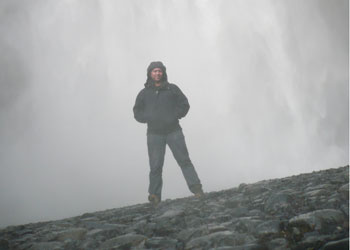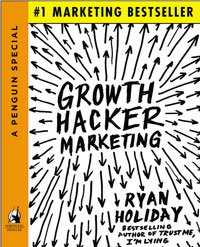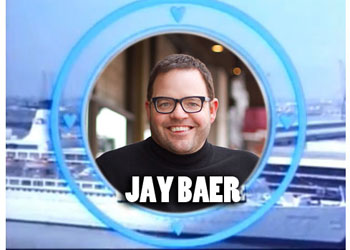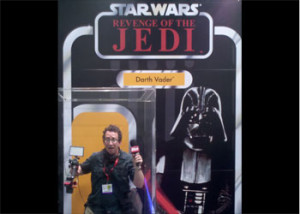Last month I had a chance to speak with Jason Calacanis in an interview for Marketing Over Coffee. Here’s the audio if reading isn’t your thing:
John: Hello, welcome to Marketing Over Coffee. I’m John Wall. We have Jason Calacanis with us here today. I’ve got two links if you want to check out his history. You can go back and look at This Week in Startups, an interview they did at Penn State where he talks about coming up as an entrepreneur. In another link, an interview with Jerry Colonna which has some great stuff as far as start-ups and coaching.
The biggest thing that pushed me to give Jason a call to try to get him on here was back in November he did a post called “Google Wins Everything” on his newsletter. As we get right into this, Jason, you just blew me away with this post. I don’t understand why it didn’t get more action and run further. Before we dig into it, can you set it up for us? What drove you to write this?
Jason: I’m in a fortunate position as a writer in that I don’t write for a particular publication. I write for myself when something is on my mind. As a writer, I tend to write about the things that I’m fascinated with that I feel people aren’t talking about. When I used to be a full-time journalist and editing a magazine back in the days working as a reporter, you had to file. So sometimes you have a weak piece, and sometimes you have a strong piece. I only write something if it’s really strong. Most of the stuff that I write is thrown away and I don’t hit the publish key. I don’t have an editor or any time to do it.
So this is just one that I was feeling building up over time, which is about Google being the most powerful, aggressive, ambitious, and intelligent company out there. At the poker tables I play at with powerful people, as it were, the discussion kept turning to, “Wow, Larry Page is going for it!” To say “lean in” would be a gross understatement. To have that many smart people and to spend your war chest of cash in such as aggressive way – moonshots, etc. – is unlike anything we’ve seen in the history of business, and perhaps humanity.
I don’t know that any other organization has tried to change the world as much as Google is doing now, except for the United States maybe. And that’s not a company, that’s a country. As a concept, what Google is doing could be as important or as ambitious, if they hit a couple of these things, as the formation of the United States, which I know sounds super-hyperbolic. The United States stood for so many things when it was founded, and its success is a big part of the reason why Google is able to do what they do.
Going after a life extension, artificial intelligence, robots, self-driving cars, wearable computing, DNA, media advertising, and search – all of the stuff concurrently and that’s the stuff we know about. But what about the stuff we don’t know about? You can be sure for every interesting thing we hear about, there are five more that we have not heard about yet. It certainly is in stark comparison when you look at Apple, which obviously has more money – $140 billion and the largest hedge fund in the world. They are debating with Carl Icahn about how much of the money to give back. Meanwhile, Larry Page and Sergey are saying, “How can we spend this money more interestingly? Oh, Nest is available for $3 billion? Let’s buy it.” That’s a long way of saying that I wrote the piece because I’m in awe of Google.
John: There are two things I wanted to follow-up with that. You’re right on the mark. You talk about America and the United States – in the late ‘60s or early ‘70s, we looked to the government to do NASA and to do literally moonshots. Now here we are 40-50 years later and this has to come out of the private sector because the government can’t get out of its own way. Do you think that’s the way this should evolve? Is this the way it’s supposed to work? Or has a certain part of our government failed and its corporates are picking up the slack?
Jason: It’s a good question. I’m not an expert on government, but I think we haven’t seen the polarization of wealth and this type of massive ability for individuals and/or companies to acquire such a large percentage of the wealth in the world. Even the robber barons now look cute in terms of the scale of them. This is a whole different level of wealth accumulation, both on a personal basis, with people like Larry or Sergey or Mark Zuckerberg being worth maybe $20-30 billion (a very-hard-to-fathom number). But then professionally those companies like Apple are throwing off $140 billion in cash.
Governments do what they need to do, and back then, going to the moon and to space was something that seemed like we needed to do. I don’t know if it was in fact essential, but there are all types of dysfunction in government. These companies I think are led by super-ambitious people. I don’t know Larry and Sergey deeply. I know them casually. Once in a while, I’ll see them at an event and talk to them for five or ten minutes. I do think that there are certain individuals right now who are, for lack of a better word, bored at what they’ve accomplished at the incredibly old ages of 35, 40, or 45, and they feel like, “If I have another 40 years left on the planet, I might as well put them to good use and try to do interesting things.” So I do think they’re coming at it from a very good place, which is not about money – since they have more than they could ever spend – or not about power, but really about innovation and trying to do interesting things. I think it comes out from, in a large part, boredom and looking for a new challenge.
John: That’s really interesting. That’s a great point. You hear a lot negatively about the disparity in wealth. But the fact that these companies have so much in their war chests, it allows them to take those bigger shots.
As far as Apple, you’ve been outspoken about Tim Cook undershooting. Literally, they’re going into China with a cheap phone. That’s the kind of stuff that the street wants to see. It’s slow, steady growth. Are there any other reasons why you think they’re not doing more moonshots over there?
Jason: I think now that Steve Jobs could care less about what Wall Street thought. Certainly, Larry Page doesn’t care. I don’t think that Zuckerberg cares all that much, either. I do think Tim Cook is a well-adjusted person who actually is considered intelligent and effective at what he does, which by the way, is not what makes a great entrepreneur. What makes a great entrepreneur is someone who is unreasonable, driven, and who doesn’t care what other people think at any given point in time. I can assure you that whatever I’ve written about Google, Larry Page and Sergey have either not read it or quickly dismissed it. They don’t care what Jason Calacanis or anybody else has to say. They care about what they’re doing and how interesting it is.
I don’t think it’s necessarily any failure of Tim Cook. I think Tim Cook is probably doing a good job of executing on the existing road map that Apple has. The problem is that the world is changing very rapidly. Since the death of Steve Jobs, you have an acceleration in technological ambition and competition, so it’s just not enough to sit there and think, “If we release the watch and a TV, then we’ll create two more categories and we’ll have a lot more money.”
You do need to be inquisitive. Not buying Nest and letting Google buy it for $3 billion when you have $140 billion in the bank is a huge blunder by Apple, in my opinion. Maybe they have some amazing Apple products coming out, but they don’t want to set the precedent that somebody who previously worked at Apple can get paid to come back to Apple, who knows? Although they did that with Steve Jobs and they bought him a plane. It’s a little bit weird.
Also, Waze was an incredible start-up that Google bought for $1 billion. Although their frontend product for their Maps was a little bit cluttered and not the best UX experience, their data was the best in the world, and the community was the best in the world. How Apple, suffering from map inadequacies that were very public, didn’t just buy Waze for $1 billion and say, “Screw it. Let’s just throw one of our 140 chips that get replenished at the rate of dozens a year. Why don’t we just throw a chip at that?”
They don’t really know how to use their billion-dollar chips, and that’s a lesson I think the next person who runs Apple – I think Tim Cook probably has five or ten years of this – is going to need to look at Larry Page, Mark Zuckerberg, Elon Musk, and the people with true ambition and say, “The world is changing. These people are doing big things. We’re going to need to perhaps change the strategy a little bit,” because they don’t have Steve Jobs anymore. It’s one thing when you have Superman on your team, but when he’s no longer in the building, I think you do have to think about changing strategy a little bit.
John: As far as Google’s domination, you talked in the past about how Mahalo was subject to them as a partner, and as their whims change, it changes the environment and can crush small up-starts. How do you see these things? Do you see this like creating an iron grip and making it that much worse? What does the future look like because of this? Does it open up more opportunity or does it make it worse?
Jason: Now you get into the really challenging issues to think about. What’s for the best of society? What’s fair in terms of competition and entrepreneurship and an open economy? Certainly, Google is a monopoly or has monopolistic positions in a lot of places. They are very powerful. As a company, on a very pragmatic basis, they really don’t communicate well.
Having been partners with them for 15 years, I was told by Matt Cutts, who is the public face of Google and is 1000 times more out there than Larry Page or Sergey are, “We don’t have partners. It’s not how we do things.” But then I meet with people from Google all the time, like YouTube, and they say, “Hey, you’re such a great partner. Can we give you more money to do other projects?” The advertising team e-mailed me after Panda and said, “We wanted to talk about optimizing your hits on Mahalo.” I said, “Do you know that you got rid of 80% of our traffic? I had to lay off 75 hard-working Americans who lost their jobs in the content business, which is a really tough business to be in. You just whipsawed us and didn’t give us any warning or any chance to correct anything or any guidance.” They said, “Yeah, that’s a different group of people.” I said, “I know, but you all have Google on your business card. You’re all eating in the same cafeteria.”
This is where Google’s “nobody is in charge” is kind of a lie and a way to subvert any conversation with them and increase their dominance. It’s a big mistake because the animosity towards Google from both ends – the streets and the partners – is growing and growing and growing. When you don’t talk to your partners and you say things like Matt says, “We don’t have partners,” while other people in the company are calling me – even this week, I had an e-mail exchange with Google, who said, “Oh my God, Inside is so brilliant! Can we work with you to get you more downloads and help you spend money with us in our ad network? We’ll run a test with you.” I said, “I’m not really in the mood to work with Google right now because of how you guys have treated us.” They want us as a partner and then they don’t want us as a partner. It’s a long way of saying they’re becoming the most loved/hated company in the world.
Apple is just all love because they’re pretty up front with their partners. They say, “This is how we do things. You make a beautiful product. You use the IOS 7 designs. You’re all good. We may or may not feature you. It’s really based on the quality of your product. If you want to be in the Apple stores, we need you to have good packaging and a great consumer experience.” They could be a tough partner, but I think they’re a fair partner. I think Google is a tough partner, but they’re not a fair partner.
John: Is the content model for Launch Ticker what is actually driving Inside? How did that all evolve?
Jason: If Inside turns out to be a Unicorn, Google will wind up having inadvertently gotten me there. I was doing Maholo. We were the 140th largest site in the United States, 16-17 million unique, $10 million run rate on just Google AdSense alone (our partner at the time), and the how-to content was getting better and better. There were times when it was low quality and times when it was medium quality, but generally speaking, we were trending really well. We were spending more per piece than anybody else in the content space and we were just getting better and better at it, making 50,000 videos on YouTube with 20-30 million views a months and 2 million subscribers.
All that was humming along so well, but then we get hit with the Panda update, and I’m e-mailing everybody I know over there and they won’t talk to me and they won’t give me a straight story. Matt Cutts lied to my face, basically, which is why you hear this little bit of resentment towards him personally. He said, “We don’t have a penalty against you,” but we had 80% of our traffic gone. He said, “You don’t need to do anything.” I said, “Obviously I need to do something.”
All that angst led me to this really dark place where I was thinking, “What am I going to do here?” I have millions of dollars in the bank. I spent millions of dollars. I was laying people off. It was a very dark moment in my career, second only to the dot.com bust and 9/11, which were back-to-back events. I was sitting there in this dark period going, “God, what do I do?”
I talked to my board and did a lot of soul searching. I thought, “I think there are three things the future is going to be about: education, video, and news.” These are three areas that really need disruption and new products. So I started testing that. We did a deal with YouTube. They gave us over $1 million to create nine shows, three of which became breakout hits, which was the goal of the program. Even though they were breakout hits with great traffic, it was a bad return on investment because the money, with Google taking 45% of it, made it just impossible. I would give that a B- as a business proposition.
Then we did educational apps. We tested a lot of interesting apps and iBooks. They really got great response from the users who got them, but they cost $100,000-300,000 to make an app, and you wound up making $50,000-100,000 and unless you had a hit, it’s a really a very hard business. The app business is really growing down.
Then I looked at the news business and I tested the minimal viable product of the Launch Ticker, which was just someone reading over all the tech news and writing it as simply and clearly as possible for me in a Google doc. It literally cost $125/day to hire a writer and nothing for a Google doc. Boy, was it compelling. I could tell from the first day I read it that it was saving me a lot of time and I loved it. That quickly grew to 5000-6000 e-mail subscribers. Smart people were looking at it saying, “This is the future.” I thought, “Hmm. Interesting. Smart people are getting it.”
I had gotten the Inside.com domain name, which is another story. I said, “Boy, this is it. If I do Inside.com/bitcoin, Inside.com/coffee, Inside.com/sochiolympics, Inside.com/woodyallen or whatever it is of the topics that are in the news, or things that people are passionate about, like Inside.com/comicbooks, and we can figure out a way to deliver it to them mobile-ly, it’s going to be a huge win.” We came up with this concept of updates and Pandora for news and we started building it. The reaction has been amazing. Without getting into too many of the numbers, people who use the product are really into it.
I basically did three tests. One of them really appealed to me as an entrepreneur. There was a founder-market fit, founder-product fit. It also happened to have a product-market fit. You really need those two things when you’re an entrepreneur. You have to love the product you’re building and the market has to love your product. If you can get those three things in a nice little triangle, where the founder loves the product, the market loves the product, and the founder loves the market, you get that little triangle going, then you’re in a good place.
I feel like Inside is just destined to be the number one news site and mobile app in the world. I think it will be as important as or more important than CNN. I know that’s a really bold, crazy statement, but it’s obvious to me that somebody has to reinvent the news, and CNN is just so saddled with the past. The New York Times is so saddled with the past. We can start fresh. It’s a huge opportunity. That doesn’t mean it’s still not a 1-3% chance we do that, but I like those odds. One percent chance of making something as important as the CNN or the New York Times – I’ll take those odds any day.
John: That’s definitely where you want to be. What about the players – everybody who dominated the news for the past three or four years? There’s the Huffington Post and Slate and all these people who have fallen prey to the click. They’d rather put something scandalous up there to drive the traffic than actually report the news. Is that at the core? Obviously, quality content is what you’re all about. Do you fear those other guys, or do you fear an upstart over them?
Jason: I wouldn’t be too worried about the big players because they have a legacy business. The New York Times has maybe 1000 journalists they need to feed. They need to pay homage to the history and keep it going. You can appreciate all of that.
But then you have the Business Insiders, and the Buzzfeeds, and the Upworthys, who I would put into the category generally of a mixed bag. They have high and low moments, so I call them “high and low.” It’s their strategy to say, “You will have a brilliant story on Buzzfeed or Business Insider.” Nicholas Carlson comes to mind with the Marissa profile, or Alyson with the Travis Kalanick profile from Uber. Buzzfeed also has some great stuff once in a while. But then they surround it with these pop culture slideshows and gimmicky headlines, like, “You’ll never believe the three things that Marissa Mayer did to be successful in kindergarten.” They say, “We know that people love kindergarten. We know they love Marissa. We know they love secrets, so let’s just do that all day long, every day.” That kind of stuff feels ephemeral and vapid and all those kinds of things, but it works. Upworthy works.
I look at those kinds of techniques, but to me, those gimmicky techniques feel just like SEO. I fell prey to that strategy as well. It can build a big rush of traffic, but it’s like hitting a crack pipe during a marathon – it’s going to get you through the next mile, but it’s going to kill you in the couple of miles after that.
Upworthy will be penalized. It will be blocked by Facebook, or they’ll be charged by Facebook and there’s going to be a huge Upworthy crash. Buzzfeed and Business Insider – who knows? Maybe they’ll be able to push into the legitimate stuff and strike a balance. You live by the gun, you die by the gun, and I think they’re a little bit too much on that crack pipe of Facebook and it’s not going to end well. Once Facebook decides, “Hmm, you’re making money off of us? We’ll cut you off and you pay us now,” which is what they did to Zynga or any other game company. They did it to people building Facebook pages. People were building Facebook pages and Facebook said, “Build up all your friends and family and get them all to like your profile page and your podcast.” Then all of a sudden, you wake up one day after you’ve invested hours and thousands or tens of thousands of dollars, and Facebook says, “You want to reach those ten thousand people who follow you? Pay. You can reach 300 of them, but to get the other 7700 of your 8000, you have to pay us.”
I think those things are part of the reason why Inside is speaking to a small number of people in a very big way. They’re tired of the cotton candy. Cotton candy is a delicious thing, but it’s very hard to eat a whole serving of cotton candy. When you get to the end, you’re disgusted. Nobody ever orders a second helping of cotton candy. The first bite is “Oh my God, delish.”
John: Do you see this new Facebook Paper coming out as a threat? Is it any good?
Jason: I think it’ll be as successful as their effort to take on Quora or Snapchat or Groupon. When a company starts to knock off other people’s innovations, like Google’s Google Video versus YouTube, the public is savvy to that and they don’t embrace it – maybe not the entire public but the ones who matter, those early adopters.
When the early adopters saw Poke, they were saying, “You ripped off Snapchat. I’m not interested.” When the YouTube community saw Google to Google video, they thought, “That’s Google. We’re not interested.” You have to be careful with that strategy. I think it’s a very beautiful homage to Flipboard, but if anybody looks at it, it’s pretty clear that they just literally stole Flipboard’s innovations, from the section functionality to flipping through stories. It’s just a knockoff. A good one though. If it was on Canal Street or in the Fendi store, you wouldn’t know, so I think that Facebook is awesome at knocking stuff off. They did it with Snapchat and Poke. Poke was probably even a better product in some ways, but you can only rip people off and get so far. 95 times out of 100, it just results in nothing, so I think that’s what we’ll see here.
I think there’s maybe a 5% chance it will work. They’re not going to put the effort and the care into it that Flipboard has. They’re certainly not going to be able to retain top employees and top talent to produce rip-offs. That’s the other thing. Can you imagine? You’re at Facebook and Zuckerberg comes down and says, “We can’t buy Snapchat, so make me a pixel-by-pixel copy of it,” or, “We can’t buy Flipboard, so make me a knockoff.” He actually famously, according to Snapchat folks, e-mailed them about Poke after they wouldn’t sell. There are two sides to every story, but that’s a little bit of taunting. I think that kind of childish taunting and copying is probably not a great long-term strategy for success.
That’s the last thing I worry about: Facebook’s efforts to copy stuff. I always look for some other entrepreneur who really understands and is thinking from zero about what the experience should be.
John: Yeah, I can see that. The early adopters pass up on it and you don’t get that same type of starting hit. How about the Launch Festival you have coming up February 24-26th in San Francisco? Are you guys ready to roll with that? Is it going to be another big year?
Jason: Yeah, I just did the rehearsals. This is the seventh year I’ll be doing a festival. The first three years I did with my old friend, Mike Arrington, at TechCrunch40 and 50. For the last three years, I’ve done it on my own as Launch Festival. This will be the seventh year I’ve done a start-up conference like this, and the companies are amazing.
They’re all coming into their first rehearsal and I give them scores. Typically the scores in the first rehearsal are 4s,5s, 6s, and 7s. Once in a while, there’s an 8. This time there was all 7s and 8s and 8.5s. In the first rehearsal, to have people doing such a good job is extraordinary.
I do that event as a break-even or loss every year, but I try to make it bigger and better every year. This year, we’ve got well over 7000 people already RSVP-ing. Last year, we had 6000, and we’re still 20 days out, so I would guess that we will hit 8000, 9000, or even 10,000 people, making it the largest start-up conference in the world, by far – and certainly the largest in the United States.
I do it for the joy of entrepreneurship and I have a little Angel investing fund. I’ve invested in 50 companies. Over the next three years, I’ll invest in 50 more, so I’ll have 100 investments. My visa says the people who come to the event, as well as the judges and people who participate, are my deal flow, so for those companies I see in rehearsal, I can see the entrepreneur and how they take the feedback during rehearsal and how they respond to it, and if I see them really improving the product and doing a great job in the four weeks of rehearsal, which is probably 30% of Y Combinator or TechStars. We don’t get any equity. It feels like that to them. If they do a really good job then I’ll probably Angel invest in them, which I’ve done in the past years.
John: That’s great. Jason Calacanis from This Week in Startups and everywhere else. It seems like you’re everywhere these days. Thanks for stopping and talking to us. Is there anything else you want to hit on on your way out the door?
Jason: No, other than that podcasting is a great thing. I always love talking to podcasters. You can follow me @Jason. You can follow Inside @Inside, and you can follow Launch @Launch, all those great names on Twitter.
John: That sounds great. Thanks again. We’ll catch up with you next week. Until then, enjoy the coffee.
Jason: Cheers.







